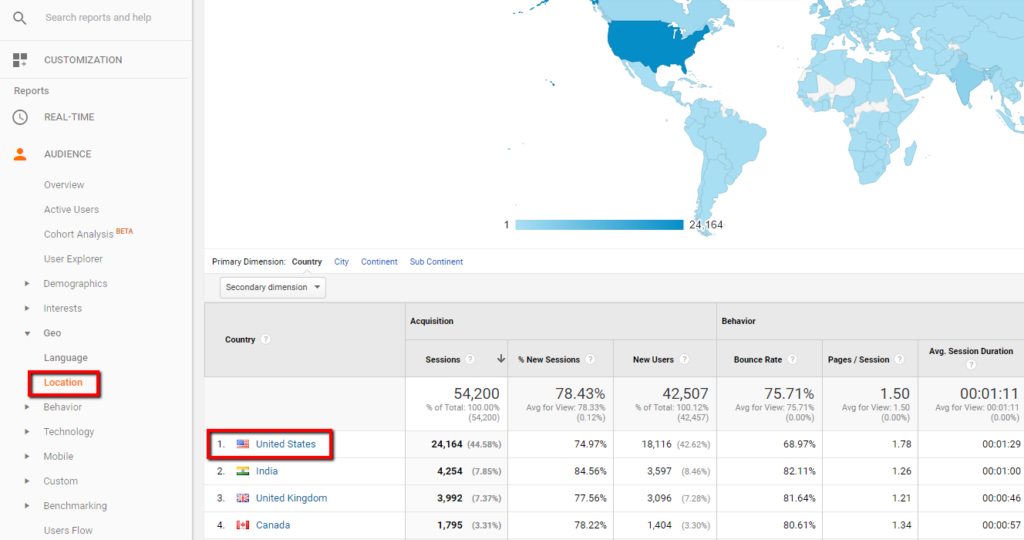Recognizing the Idea of a 'Secondary Dimension' in Google Analytics: What Does It Mean?
Recognizing the Idea of a 'Secondary Dimension' in Google Analytics: What Does It Mean?
Blog Article
Demystifying Second Measurement in Google Analytics: The Trick to Recognizing Your Information Like Never Prior To
In the world of digital analytics, the capability to extract purposeful understandings from data is vital for educated decision-making. Among the plethora of devices readily available, Google Analytics stands apart as a giant, yet several individuals stay not aware of the untapped prospective lying within its Additional Measurement function. By peeling back the layers of complexity surrounding this tool, a whole new globe of data interpretation and evaluation unveils itself. Comprehending the nuances of Additional Measurement could be the missing item in your analytics puzzle, losing light on patterns and correlations that were formerly obscured.
Recognizing the Basics of Additional Measurement
Additional dimensions in Google Analytics function as auxiliary characteristics that give much deeper understandings into main information metrics, improving the general understanding of user habits and interactions on a website. By including additional measurements to your primary data metrics, you can sector and assess your information additionally, uncovering important details that may have been concealed otherwise.
Comprehending the essentials of secondary dimensions is critical for enhancing your site's performance and user experience. what is a “secondary dimension” in google analytics?. When utilizing second dimensions, it is important to understand that they can be contributed to various reports in Google Analytics, enabling you to explore additional elements of your data past the conventional measurements
Moreover, additional measurements allow you to compare and contrast different data factors, aiding you determine patterns, trends, and correlations that can inform your advertising techniques and site optimizations. Whether evaluating traffic sources, customer demographics, or habits on particular pages, additional measurements play a crucial function in extracting purposeful insights from your Google Analytics information.
Using Secondary Dimension in Records
To deepen the analysis of user habits and communications on a web site, integrating second dimensions right into reports in Google Analytics supplies a much more thorough understanding of data metrics. By using second dimensions in reports, experts can reveal beneficial insights that surpass the surface-level information supplied by primary dimensions alone. This function allows individuals to section and drill down into their data further, revealing connections and patterns that may have or else gone undetected.
With the application of additional dimensions, users can acquire a much deeper understanding of the context surrounding their primary data points. For instance, integrating the main dimension of 'source/medium' with an additional dimension like 'landing web page' can disclose which particular touchdown web pages are driving traffic from various sources. This level of granularity can help marketing professionals customize their strategies to enhance performance based on these thorough insights.
Analyzing Data With Second Measurement
Using second dimensions in data analysis enhances the depth of understandings originated from Google Analytics records. By including a secondary dimension to your main data collections, you can discover beneficial correlations and patterns that might or else continue to be undetected. This additional layer of details permits more nuanced analyses of customer habits, web traffic resources, and other crucial metrics.
When assessing information with additional dimensions, it is crucial to focus on relevant mixes that line up with your particular goals. Combining the primary measurement of 'landing web pages' with a second measurement like 'tool group' can disclose how various tools influence the efficiency of different landing pages. This type of evaluation can lead to actionable insights, such as maximizing web page layouts for specific devices to improve overall customer experience and conversion rates.
Furthermore, leveraging secondary measurements enables you to sector and compare information a lot more successfully, giving a comprehensive view of your website's performance from various angles. This multifaceted technique to information evaluation empowers services to make enlightened decisions and tailor their approaches for maximum effect.

Advanced Techniques With Additional Measurement
One sophisticated method includes using additional measurements to section data further, allowing a more granular evaluation of customer habits. Combining the primary dimension of 'Source/Medium' with the additional measurement of 'Device Classification' can expose just how various devices contribute to web traffic from numerous sources.
Furthermore, employing secondary dimensions combined with filters permits more accurate information adjustment. Filtering information click over here by details requirements and after that including secondary measurements can supply a more clear photo he said of user interactions based upon various qualities. This approach is especially valuable for determining patterns or abnormalities within fractional data collections.
Additionally, utilizing second measurements in personalized reports or dashboards can enhance the analysis process and help with the surveillance of essential efficiency indications throughout different dimensions. By tailoring reports with additional dimensions, analysts can concentrate on particular metrics customized to their unique logical needs, boosting the overall data analysis and decision-making procedure.
Enhancing Information Interpretation With Additional Dimension
Enhancing data interpretation with additional measurements in Google Analytics provides a deeper understanding of individual habits and insights into crucial performance metrics. what is a “secondary dimension” in google analytics?. By utilizing second dimensions, analysts can section and filter their data to reveal important patterns and trends that may not be instantly evident when checking out the information in its main type. This boosted level of granularity enables a much more extensive analysis of customer interactions on a website or application
Secondary measurements can be specifically valuable in separating particular variables that may affect user habits, such as the source of web traffic, device type, or geographic location. By layering these added measurements onto primary information collections, analysts can acquire a more nuanced viewpoint on just how various aspects influence user involvement and conversion rates.
Verdict
In conclusion, making use of the secondary measurement feature in Google Analytics provides a deeper level of insight right into site information by allowing customers to analyze data from several point of views. By using secondary measurements in records, evaluating information, and utilizing sophisticated techniques, users can boost their data interpretation and make even more informed choices for their internet sites - what is a “secondary dimension” in google analytics?. Recognizing and leveraging second dimensions is essential for getting a comprehensive understanding of internet site performance and customer actions

In final thought, using the secondary dimension feature in Google Analytics gives a much deeper degree of understanding into web site data by enabling individuals to evaluate data from several viewpoints.
Report this page